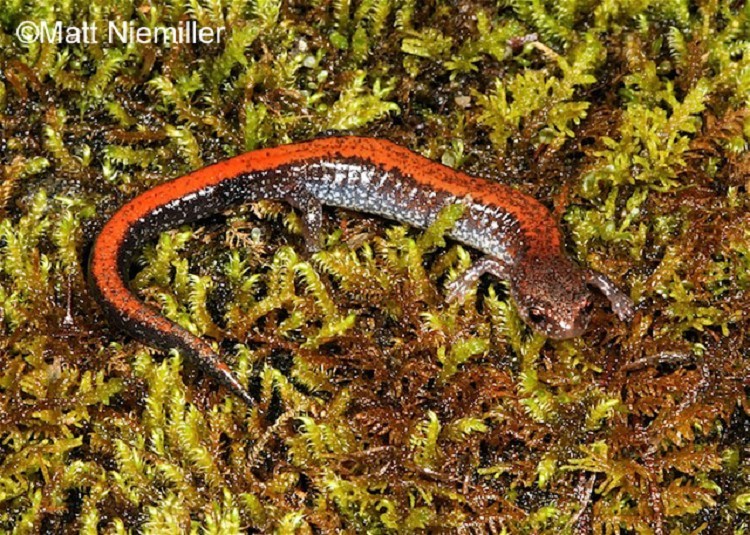Southern Red-backed Salamander
Plethodon serratusThe Southern Red-Backed salamander occurs in the Blue Ridge Mountains south of the French Broad River, while the identical Eastern Red-backed Salamander occurs north of the French Broad River.
Description: A small, slender salamander (2.5 to 4.0 inches in length) with two color morphs, striped and lead-backed. The striped morph has a red to orangish-red broad stripe from the head to the tail, while the body color is brown to dark brown.
Stripes in some specimens may have a serrated or saw-toothed edge. The lead-backed morph has no stripe on the back and is uniformly dark gray in color. Both the morphs have a black and white patterned belly producing a “salt-and-pepper” effect.
Similar Species: Distinguished from identical Eastern Red-backed Salamander by the range and genetic analysis. Southern Zigzag Salamander has a more pronounced wavy edge to stripe along the back.
Habitat: Found beneath rocks, logs, and leaf litter in mixed hardwood forests.
Diet: Ants, termites, beetles, flies, spiders, snails, mites, and other small invertebrates.
Breeding information: Adults mate in winter and spring. Females lay eggs in underground cavities during the summer and brood them until hatching. The young hatch in late summer as small adults, as they do not go through a larval stage.
Status in Tennessee: Common in Great Smoky Mountains National Park, where a large portion of the TN population occurs.
Fun Facts:
- The Latin name serratus refers to the “saw-toothed” edge of the dorsal stripe, which mainly occurs within the Louisiana and Arkansas populations.
Best places to see in Tennessee: Mixed hardwood forests in the Great Smoky Mountains.
